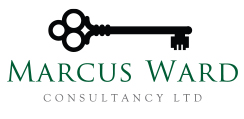This article looks at the period of activity before a business VAT registers: How to deal with sales and what input tax may be recovered.
VAT Registration
The obligation to VAT register here and the pros and cons of voluntary registration here.
Sales
Between application and receiving a VAT number:
During the wait, a business cannot charge or show VAT on its invoices until it receives a VAT number. However, it will still be required to pay the VAT to HMRC for this period. Usually, a business will increase its prices to allow for this and tell its customers why. Once a VAT number is received, the business can then reissue the relevant invoices showing VAT.
Purchases
Purchases made before registration:
Only the legal entity which actually purchased the goods or services and has applied to VAT register is entitled to input tax recovery.
There are time limits for backdating claims for input tax incurred before registration. These are:
- four years for goods on hand at the time of the Effective Date of Registration (EDR), or that were used to make other goods on hand at the EDR. This includes both stock for resale or fixed assets
- six months for services
Input tax can only be reclaimed if the pre-registration expenditure related to the taxable supplies made, or to be made, by the newly VAT registered business (whether these supplies are subject to subsequent output tax or whether they were made pre-registration but would have been taxable if the business was VAT registered).
The only VAT return on which such input tax is recoverable is the first.
Tip
When a business applies for registration, there is an opportunity to backdate the EDR. The provision for taxpayers to negotiate an earlier date is contained in The VAT Act 1994, Schedule 1, 9. This option should be considered if there is additional VAT that would become recoverable. This will mean that the first return will be longer than the normal quarterly or monthly returns.
The limit for backdating EDR is four years.
Irrecoverable VAT
Input tax cannot be reclaimed on:
- goods that have been completely consumed before registration, eg; fuel, electricity or gas
- goods that have been sold before registration
- goods or services which relate to exempt supplies made, or to be made, by the registered business (see below)
- services which related to goods disposed of before registration
NB: Businesses are not required to reduce the VAT deducted in respect of pre-registration use of fixed assets. Eg; input tax incurred on a van purchased three years before registration and used before and after registration would be recoverable in full.
The “usual” rules for input tax also apply to pre-registration claims; that is, some VAT is never reclaimable, see here.
Specific circumstances
There are special rules for partially exempt businesses and for businesses that have non-business income and for the purchase of certain items (see below) covered by the Capital Goods Scheme (CGS).
Included in the CGS are:
- taxable land, property purchases of £250,000 or over
- refurbishment or civil engineering works costing £250,000 or over
- computer hardware costing £50,000 or over (single items, not networks)
- aircraft, ships, and other vessels costing £50,000 or more
NB: The partial exemption de minimis limit does not apply to input tax incurred pre-registration.
Pre-incorporation
A limited company cannot register for VAT until it is formally incorporated. Goods or services may have been supplied to the directors or employees setting up the company before then.
A company can claim input tax on those goods and services if the it relates directly to the taxable business to be carried on by it following incorporation and registration for VAT. The six-month (services) four-year (goods) limits also apply to pre-incorporation claims.
Documentation
Any claim must be supported by a valid VAT invoice for each item. If this documentation is not available, there is a possibility that HMRC will accept alternative evidence.
Legislation
The right to deduct input tax as above is covered by The VAT general Regulations 1995, reg 111.
